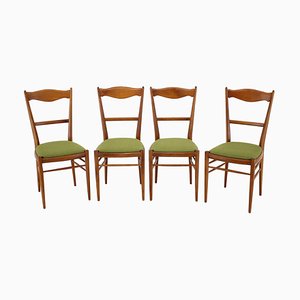Spotlight on 3 classic antique chairs featured in the Atlas of Furniture Design
Inspired by Vitra Part II
One of the best things about having to spend so much time at home these days is the fact that we finally got around to cracking Vitra Design Museum’s latest tome: Atlas of Furniture Design. Yes, it’s been out since November, and yes, it offers an intriguing new look at our favorite subject, important works of design history. But you have to understand; really studying this book requires a certain degree of commitment. As the book boasts on its spine, it encompasses 1,740 objects from 237 years spread across 1,028 pages.
Our first short story inspired by the Atlas focused on 21st-century designs, but today we’re jumping all the way back to the 19th century—when a handful of visionaries began to develop the style we now call modernism. The authors offer the 1851 Crystal Palace exhibition (the first World’s Fair) as the watershed moment in design history, when ideology, technology, and societal changes came together to create just the right conditions to nurture an international push to modernize objects for domestic use.
Sure, there was still a great demand for highly ornate, overly wrought, revivalist decoration back then. But the seeds of modernisms were sown. Here are three of the pioneering, forward-facing designs that inspired much that followed in the 20th century.
The Chiavari Chair
Thin, sturdy, and comfortable, the Chiavari was first developed in 1807 by Giuseppe Gaetano Descalzi, a furniture maker working in a small Italian town called Chiavari. The design was born from a challenge set forth by a local marquis, who asked the local furniture makers to copy woven-seat, ladder-back chairs that he had brought back from Paris. Descalzi improved on the French models by creating a frame that was even airier and legs that were more tapered. The marquis named Descalzi the winner, declaring that “the problem of how to combine the greatest lightness with the greatest strength has been solved.” Descalzi went on to create multiple versions of the Chiavari and inspired countless others to riff on the basic design—including Gio Ponti with his iconic Superleggera in the late 1950s. Photo © Kabinet Hubert
The Windsor Chair
“The definitive origins of the Windsor Chair furniture type remain unknown,” write the authors of the Atlas. The name first appeared in Great Britain in 1724 and supposedly derives from the town of the same name, from which the chairs shipped east to London. The chair design became popular in Britain and the US in the 19th century. Many versions of this anonymous, vernacular design have been created, but they always share certain fundamental elements: solid wood construction, saddle seats, and spindle backs. In the 20th century, modernists embraced the design, admiring how every Windsor is simple and sturdy, economically produced, and highly functional. Photos © Arcadia Antiques and Retro-Design DK
Thonet Chairs
There’s an argument to be made that Michael Thonet (1796-1871) was the very first modernist designer. He wasn’t a theorist per se, but the myriad bentwood designs for which he is responsible embody everything that 20th-century design thinkers would strive for: innovative and efficient use of materials, clarity of form, adaptable functionality, flat-pack shipping, and more. This was all accomplished before the turn of the 20th century, but Thonet’s designs remain in production today. Photos © Max Vintage
If you're shopping for Thonet or other proto-modernist designs, check out Pamono dealer Davint Design.
More to Love
Italian Beech Dining Chairs, 1960s, Set of 4

Mid-Century Finnish Dining Chair by Ilmari Tapiovaara, 1960s

Beech Dining Chairs, 1960s, Set of 4

Finnish Rocking Chair by Varjosen Puunjalostus for Uusikylä, 1960s

Dining Chairs from Gebrüder Thonet Vienna GmbH, 1930s, Set of 5

Model 752 Armchairs by Josef Frank for Thonet, 1930s, Set of 2

Antique Nr. 60000 Side Chair from Thonet, 1900s

Model 15 Office Chair from Thonet, 1900s

Antique Austrian Model 14 Rosewood Dining Chair from Thonet

Model B313 Stool by Josef Frank for Thonet, 1928

Dining Chairs by Antonín Šuman, 1966, Set of 4

